Abstract
Two hundred and forty mildly myopic schoolchildren aged 9-11 years were randomly allocated to three treatment groups and the progression of myopia was followed-up for three years. The treatment groups were: (1) minus lenses with full correction for continuous use (the reference group), (2) minus lenses with full correction to be used for distant vision only, and (3) bifocal lenses with +1.75 D addition. Three-year refraction values were received from 237 children. The differences in the increases of the spherical equivalents were not statistically significant in the right eye, but in the left eye the change in the distant use group was significantly higher (-1.87 D) than in the continuous use group (-1.46 D) (p = 0.02, Student's t test). There were no differences between the groups in regard to school achievement, accidents, or satisfaction with glasses. In all three groups the more the daily close work done by the children the faster was the rate of myopic progression (right eye: r = 0.253, p = 0.0001, left eye: r = 0.267, p = 0.0001). Myopic progression did not correlate positively with accommodation, but the shorter the average reading distance of the follow-up time the faster was the myopic progression (right eye: r = 0.222, p = 0.0001, left eye: r = 0.255, p = 0.001). It seems that myopic progression is connected with much use of the eyes in reading and close work and with short reading distance but that progression cannot be reduced by diminishing accommodation with bifocals or by reading without spectacles.
Full text
PDF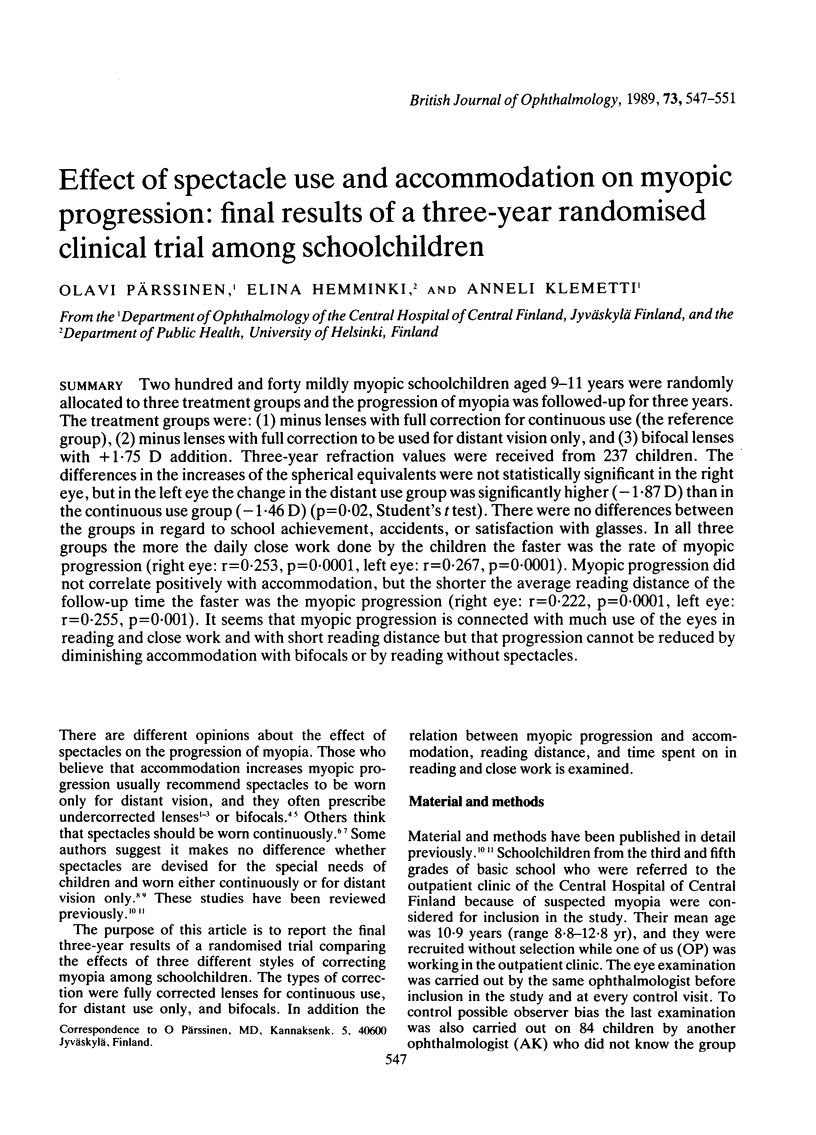
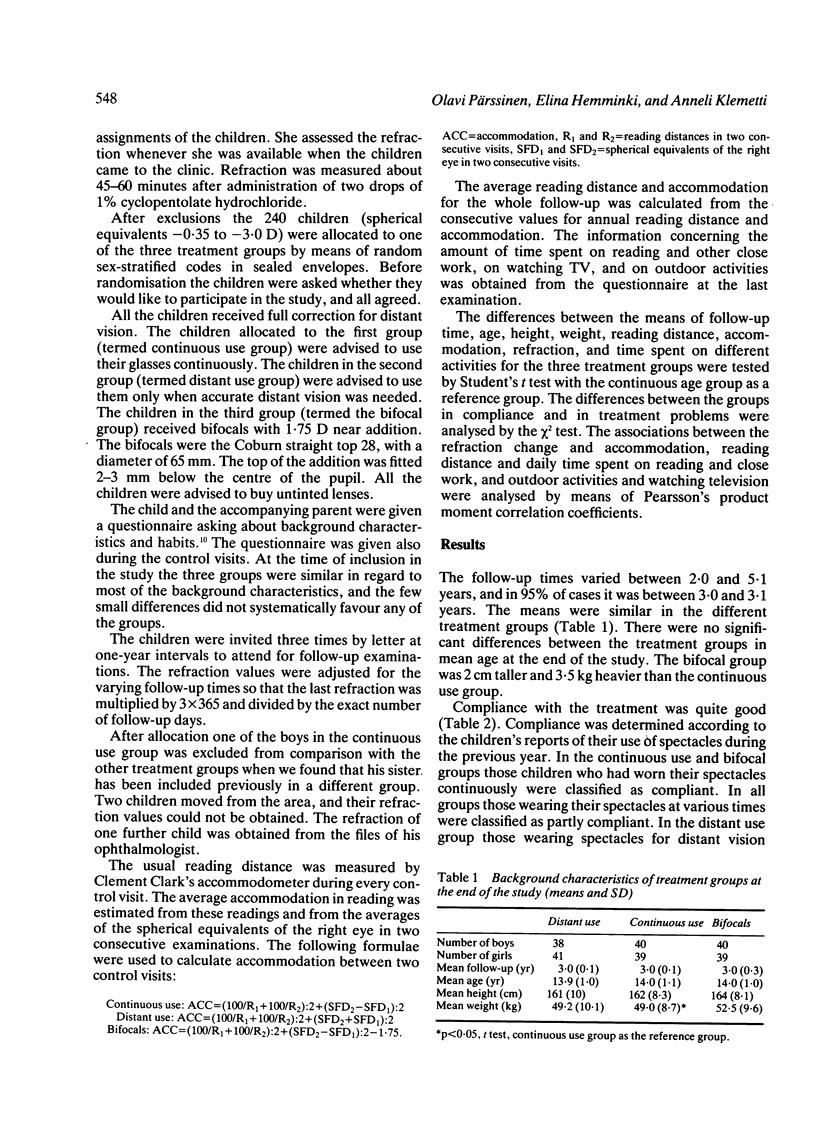
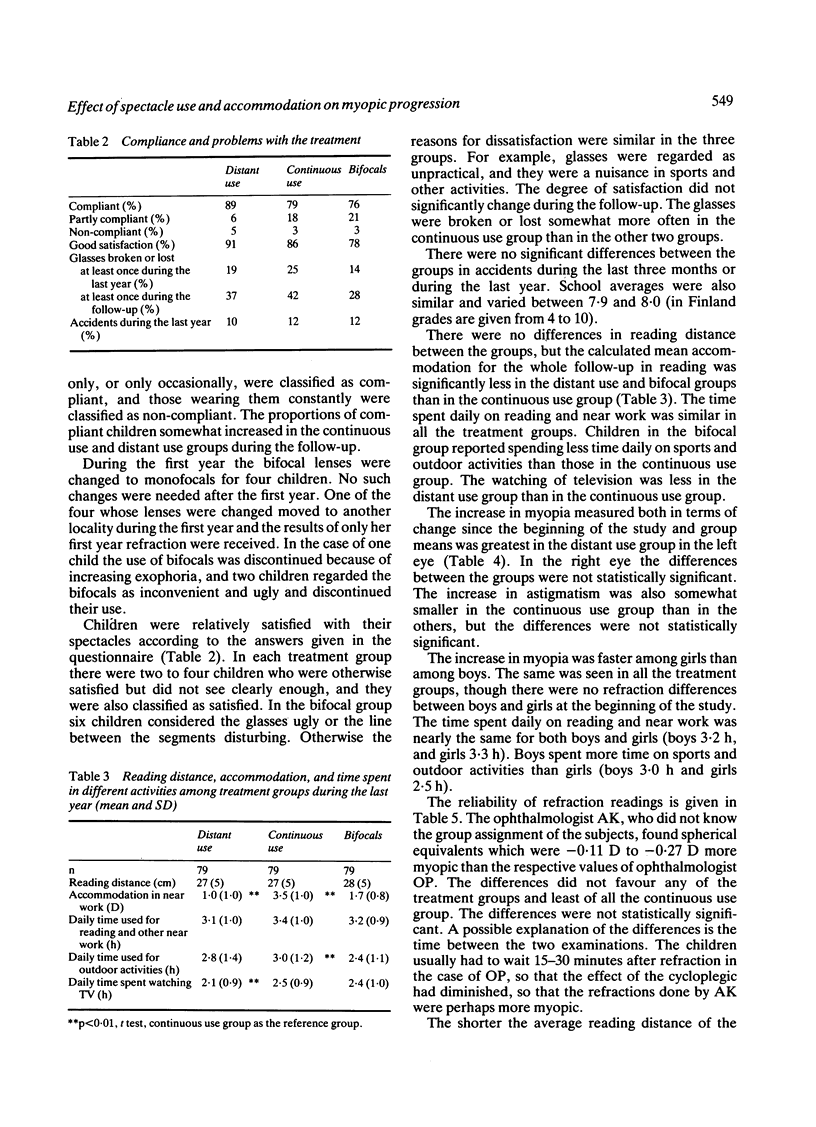
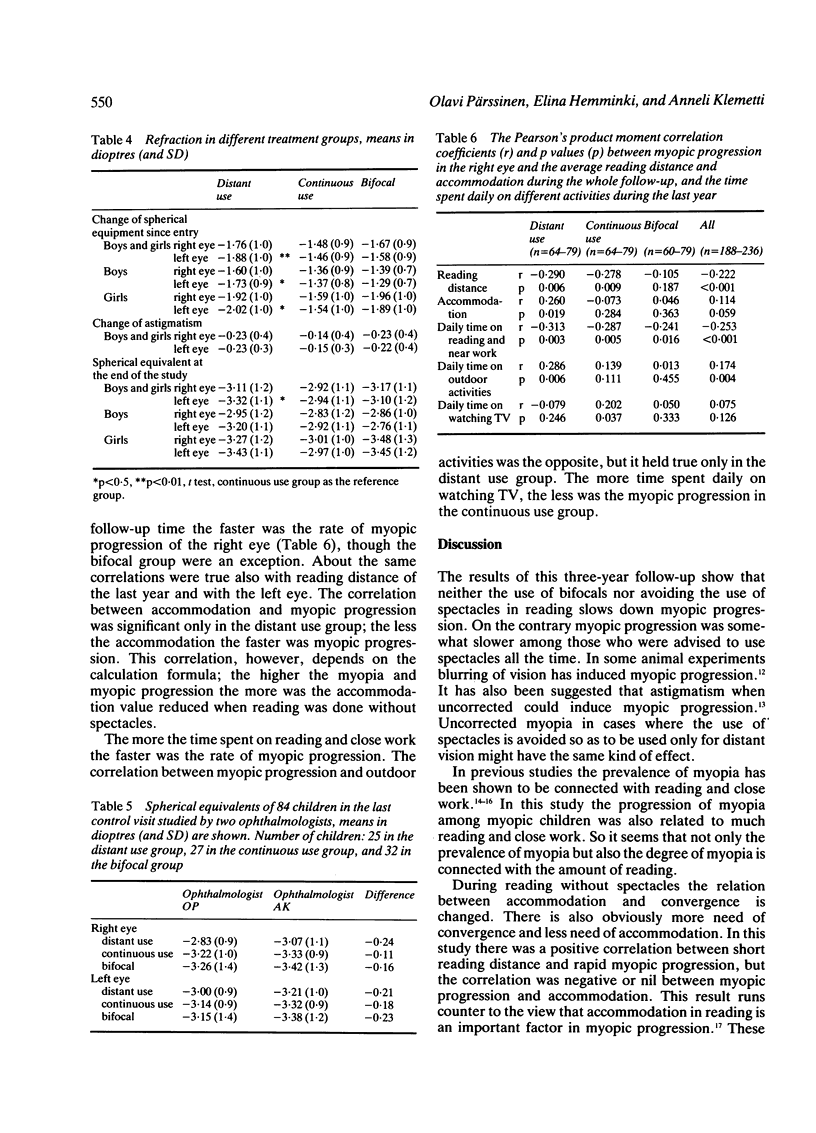
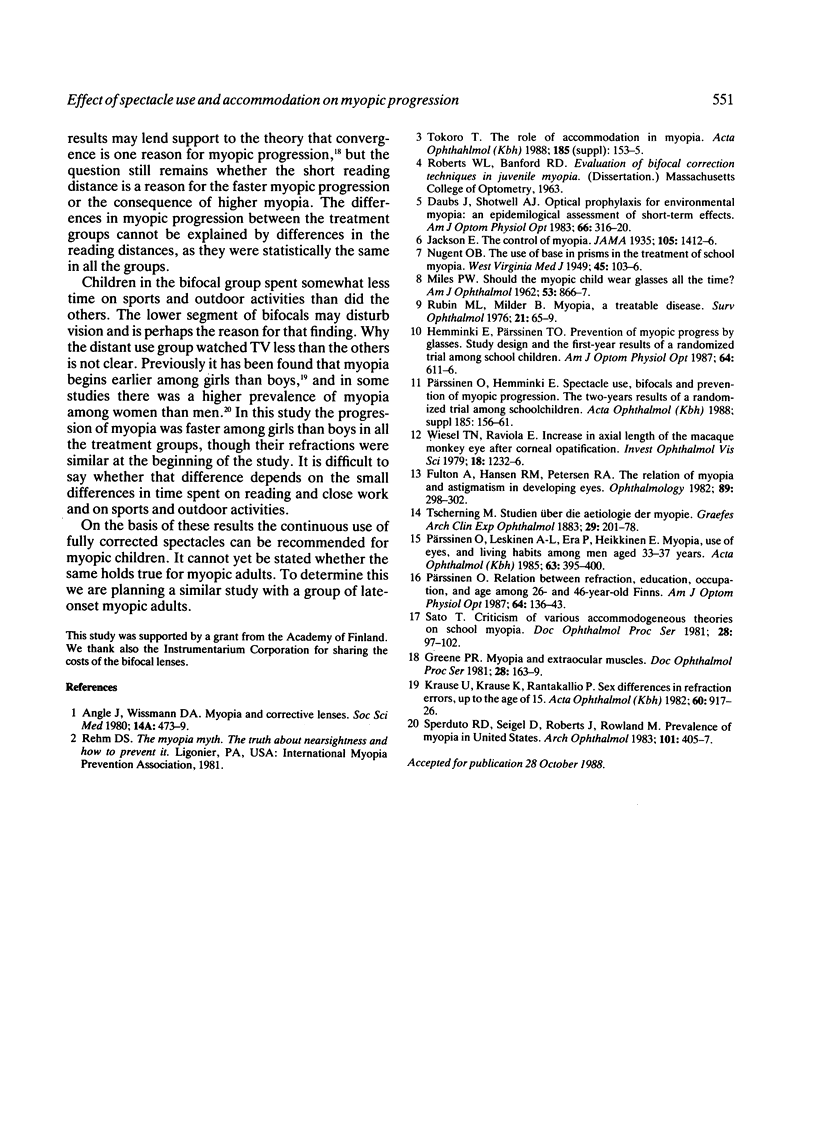
Selected References
These references are in PubMed. This may not be the complete list of references from this article.
- Angle J., Wissmann D. A. Myopia and corrective lenses. Soc Sci Med Med Psychol Med Sociol. 1980 Dec;14A(6):473–479. doi: 10.1016/0160-7979(80)90046-6. [DOI] [PubMed] [Google Scholar]
- Daubs J., Shotwell A. J. Optical prophylaxis for environmental myopia: an epidemiological assessment of short-term effects. Am J Optom Physiol Opt. 1983 Apr;60(4):316–320. [PubMed] [Google Scholar]
- Fulton A. B., Hansen R. M., Petersen R. A. The relation of myopia and astigmatism in developing eyes. Ophthalmology. 1982 Apr;89(4):298–302. doi: 10.1016/s0161-6420(82)34788-0. [DOI] [PubMed] [Google Scholar]
- Hemminki E., Pärssinen O. Prevention of myopic progress by glasses. Study design and the first-year results of a randomized trial among schoolchildren. Am J Optom Physiol Opt. 1987 Aug;64(8):611–616. doi: 10.1097/00006324-198708000-00008. [DOI] [PubMed] [Google Scholar]
- Krause U., Krause K., Rantakallio P. Sex differences in refraction errors up to the age of 15. Acta Ophthalmol (Copenh) 1982 Dec;60(6):917–926. doi: 10.1111/j.1755-3768.1982.tb00622.x. [DOI] [PubMed] [Google Scholar]
- MILES P. W. Should the myopic child war glasses all the time? Am J Ophthalmol. 1962 May;53:866–867. doi: 10.1016/0002-9394(62)93412-8. [DOI] [PubMed] [Google Scholar]
- Pärssinen O., Hemminki E. Spectacle-use, bifocals and prevention of myopic progression. The two-years results of a randomized trial among schoolchildren. Acta Ophthalmol Suppl. 1988;185:156–161. doi: 10.1111/j.1755-3768.1988.tb02698.x. [DOI] [PubMed] [Google Scholar]
- Pärssinen O., Leskinen A. L., Era P., Heikkinen E. Myopia, use of eyes, and living habits among men aged 33-37 years. Acta Ophthalmol (Copenh) 1985 Aug;63(4):395–400. doi: 10.1111/j.1755-3768.1985.tb01551.x. [DOI] [PubMed] [Google Scholar]
- Pärssinen T. O. Relation between refraction, education, occupation, and age among 26- and 46-year-old Finns. Am J Optom Physiol Opt. 1987 Feb;64(2):136–143. doi: 10.1097/00006324-198702000-00010. [DOI] [PubMed] [Google Scholar]
- Rubin M. L., Milder B. Myopia--a treatable "disease"? Surv Ophthalmol. 1976 Jul-Aug;21(1):65–69. doi: 10.1016/0039-6257(76)90050-3. [DOI] [PubMed] [Google Scholar]
- Sperduto R. D., Seigel D., Roberts J., Rowland M. Prevalence of myopia in the United States. Arch Ophthalmol. 1983 Mar;101(3):405–407. doi: 10.1001/archopht.1983.01040010405011. [DOI] [PubMed] [Google Scholar]
- Tokoro T. The role of accommodation in myopia. Acta Ophthalmol Suppl. 1988;185:153–155. doi: 10.1111/j.1755-3768.1988.tb02697.x. [DOI] [PubMed] [Google Scholar]
- Wiesel T. N., Raviola E. Increase in axial length of the macaque monkey eye after corneal opacification. Invest Ophthalmol Vis Sci. 1979 Dec;18(12):1232–1236. [PubMed] [Google Scholar]


